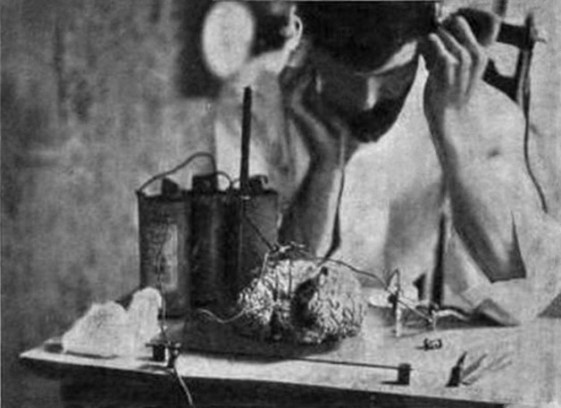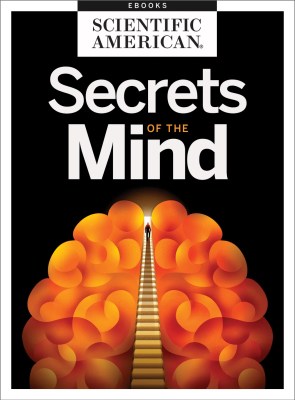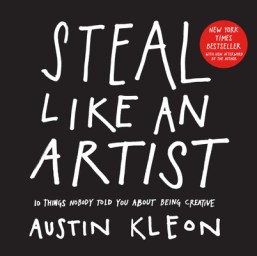BRAINS! BRAINS! BRAINS!
As much as I’d love it to be a post about zombies; this is not a post about zombies.
It’s about creating.
Although it’s not about creating brain-eating reanimated beings shambling endlessly in search of the living, I hope to shed some light on how we creators shamble endlessly in search of creating something unique and satisfying. And it all starts in our heads. In our brains to be exact.
My mother was known to use the phrase, “You put crap in. You get crap out” when addressing her five, often rock-headed teenage sons. My lone sister, a voracious reader of all things, never seemed to receive this nugget of wisdom from mom. It appears the boys were singled out because of the music, horror movies, comedians with “poor language choices”, etc. that we consumed. Nevertheless, “Crap in. Crap out.” has stuck with me. (Thanks, Mom!)
I recently bought Scientific American’s Secrets of the Mind from their awesome catalog of eBooks. These books from Scientific American are compilations of their articles about a particular topic which I highly recommend. Secrets of the Mind has not disappointed me so far. In fact, it hits the ground running with the Introduction, “Mind from Matter” by Andrea Gawrylewski, and breaks into a sprint from the very first article, “How Matter Becomes Mind” by Max Bertolero and Danielle S. Bassett.
Bertolero and Bassett’s article is about the network architecture currently being defined and refined in their and others’ recent brain cognition research. I was fascinated, to say the least. We’ve possessed accurate maps of the human brain for quite some time with the brain regions defined by their functions, i.e. vision, motor, emotions, etc. However, these accurate and defined maps of the brain do very little to explain how the brain really works.
The next wave of research is examining just how these regions fit into the network of the brain to allow us to be walking, talking, thinking, and creating humans. And you know what? It turns out Mom was right again! Crap in certainly leads to crap out in the brain.

An experiment by US radio engineer Archie Frederick Collins in 1902 tried to use a human brain as a radio wave detector. Public domain, via Wikimedia Commons
The nitty-gritty of a brain network:
The brain network, like most networks, consists of basic building blocks named nodes and edges. Nodes are the units of the network, which, in the brain’s case, are the individual neurons. Edges are the connections between the nodes. The brain’s edges are how neurons are intertwined with the other neurons.
The brain has modularity, it has a localized network where the nodes show stronger connections to each other. Such modules have specific functions. Sensory and motor cognitive processes involve adjoining modules that are mainly confined to a specific lobe of the brain. The brain needs to put together or process information from multiple, confined modules to make sense of cognitive tasks.
Imagine reading a book without being able to incorporate the emotional modules. The reader experience would be greatly diminished. Since our brain can’t let that happen (You have to take that emotional hit in Bridge to Terabithia to experience the total impact of the story, right?) it’s evolved hubs.
Hubs are nodes where the brain’s different modules meet. They control and mesh activity from multiple modules. Some of these key hub modules, like the frontoparietal control module and the default mode module, make important global connections between brain lobes.

As we can see, a network in our brain is built upon a structural framework of nodes, edges, modules, and hubs. A rigid, standard architecture, right? Yes and no. If the parts and processes are similar in all of our brains, why don’t we all think, act, and react similarly? Why aren’t we all like a shambling species of zombies thinking and responding the same to the same series of inputs?
It’s because we all have slight variations in the way the circuits in our brains are wired. New methods of mapping and analyzing brain activity show we all have distinct “fingerprints” inside our heads. Plus, if a brain network has strong hubs with many connections among modules, its modules are segregated from one another allowing for more efficient storage and processing.
Stronger functional connections show a stronger functional capacity.
This specific organization allows the brain to function as an integrated network of thoughts, feelings, quirks, flaws, and mental strengths. It allows us to establish our unique identity and maintain it. Our brain network makes us who we are today and tomorrow.
In Austin Kleon’s classic, Steal Like an Artist, he says,
“A wonderful flaw about human beings is that were incapable of making perfect copies. Our failure to copy our heroes is where we discover where our own thing lives. That is how we evolve.
So: Copy your heroes. Examine where you fall short. What’s in there that makes you different? That’s what you should amplify and transform into your own work.
In the end, merely imitating your heroes is not flattering them. Transforming their work into something of your own is how you flatter them. Adding something to the worlds that only you can add.”

It all fits in. It all makes sense in the grand scheme of how our creative brains work.
Science shows it.
Artists show it.
Mom knew it all along.
We are the sum of all we take in. Our wonderful and unique brains take all the data we feed them and then process it into something only each of us can produce. When we allow ourselves the courage to create from what’s between our ears, we create something brand new and unique. The more we stock our brains with quality input data, the more we have in the creative well to draw from.
Austin Kleon gives the advice, “Write the book you want to read.”
How do you do this? By using your unique fingerprint of nodes, edges, modules, and hubs to do the work of turning the things you input into outputs only you can create.
Creative braining wins!
Read. Write. Repeat.
Like this:
Like Loading...


 By Faran Fagen
By Faran Fagen

